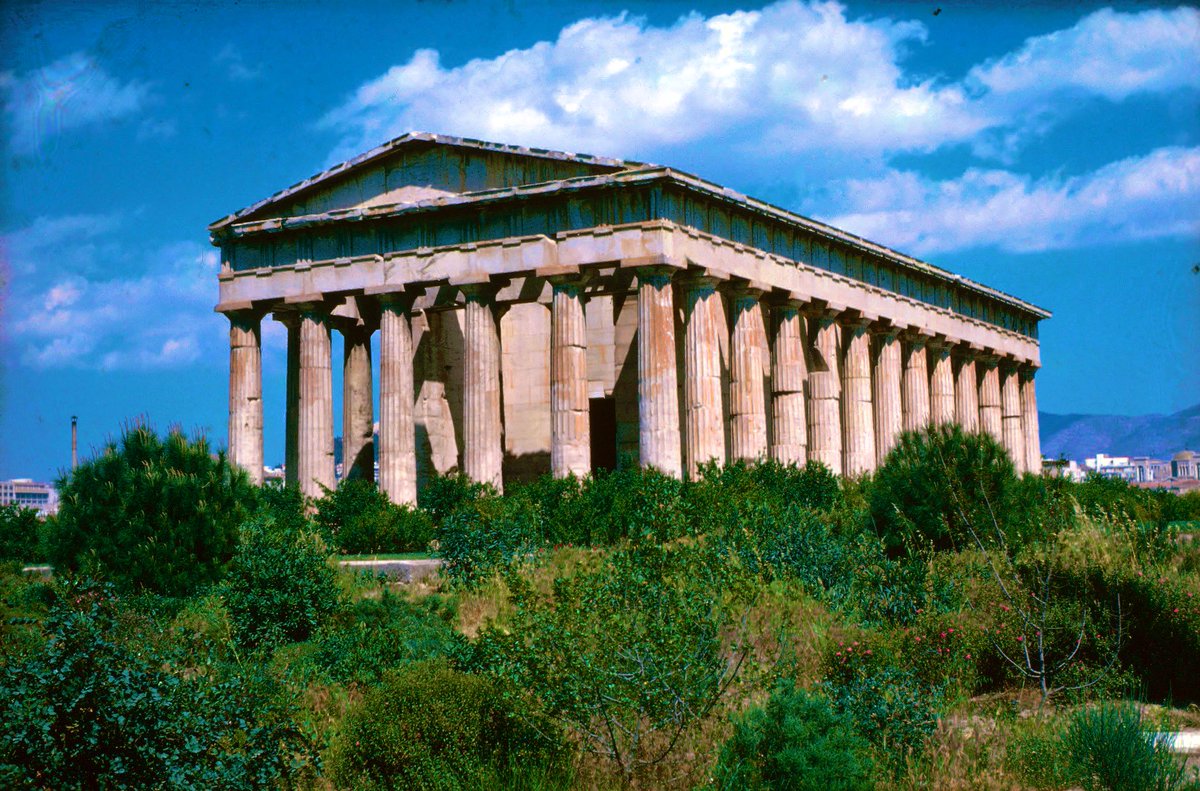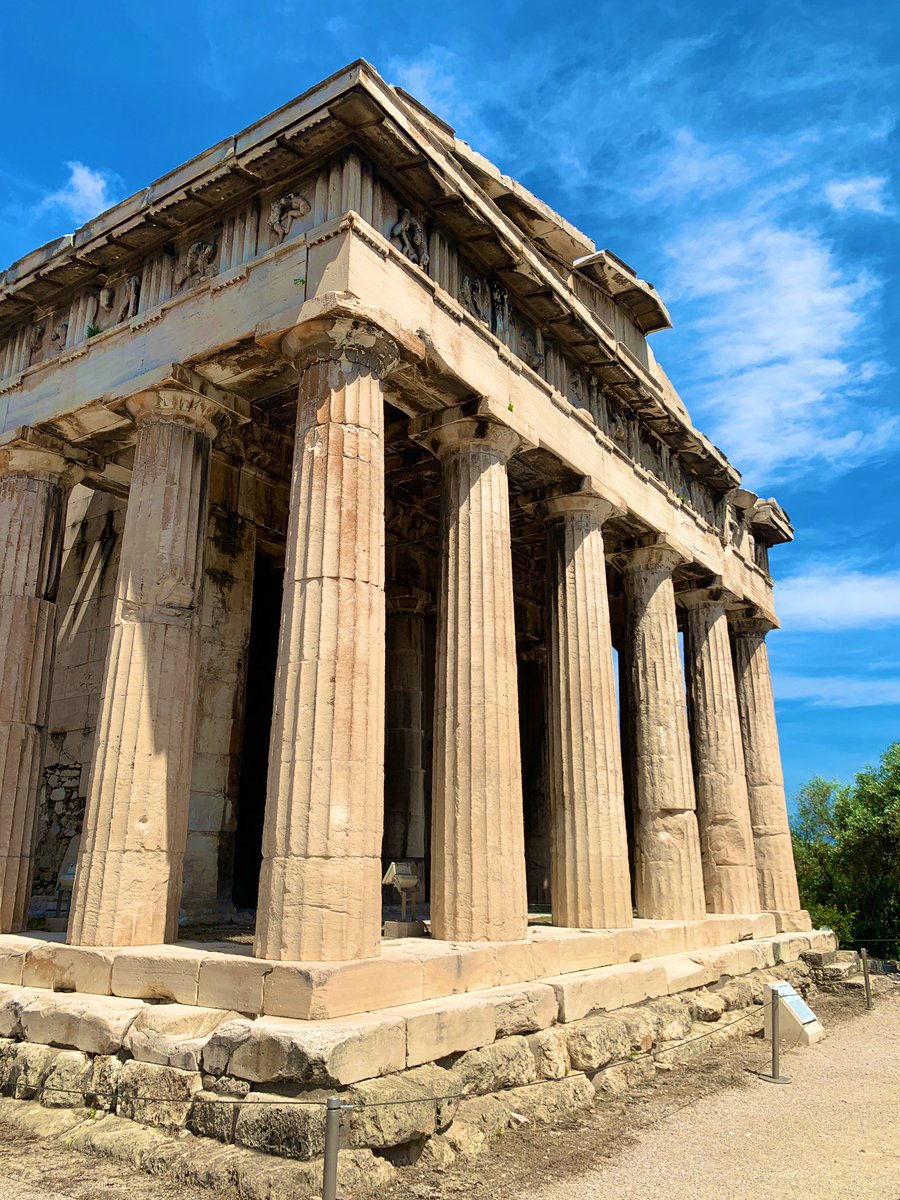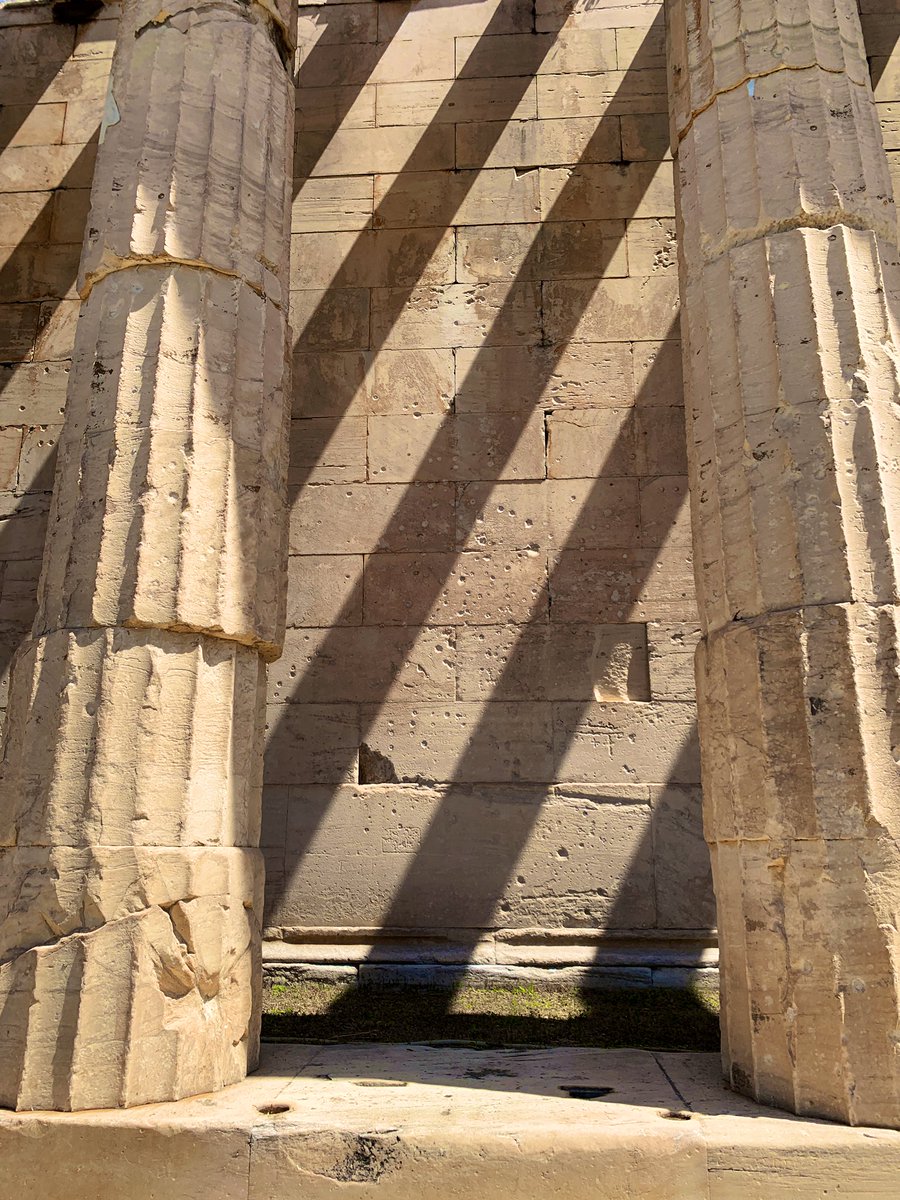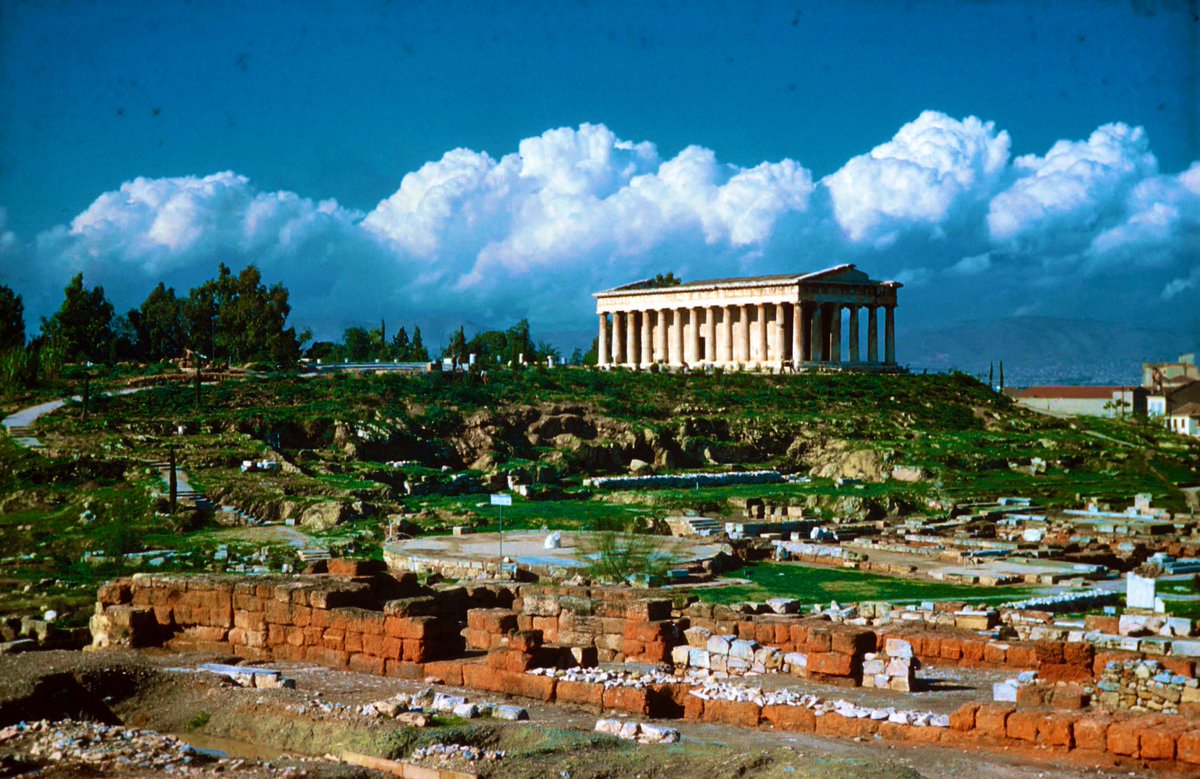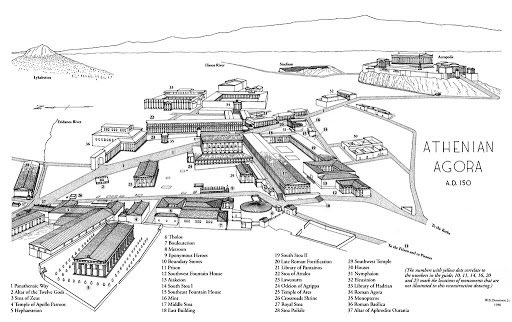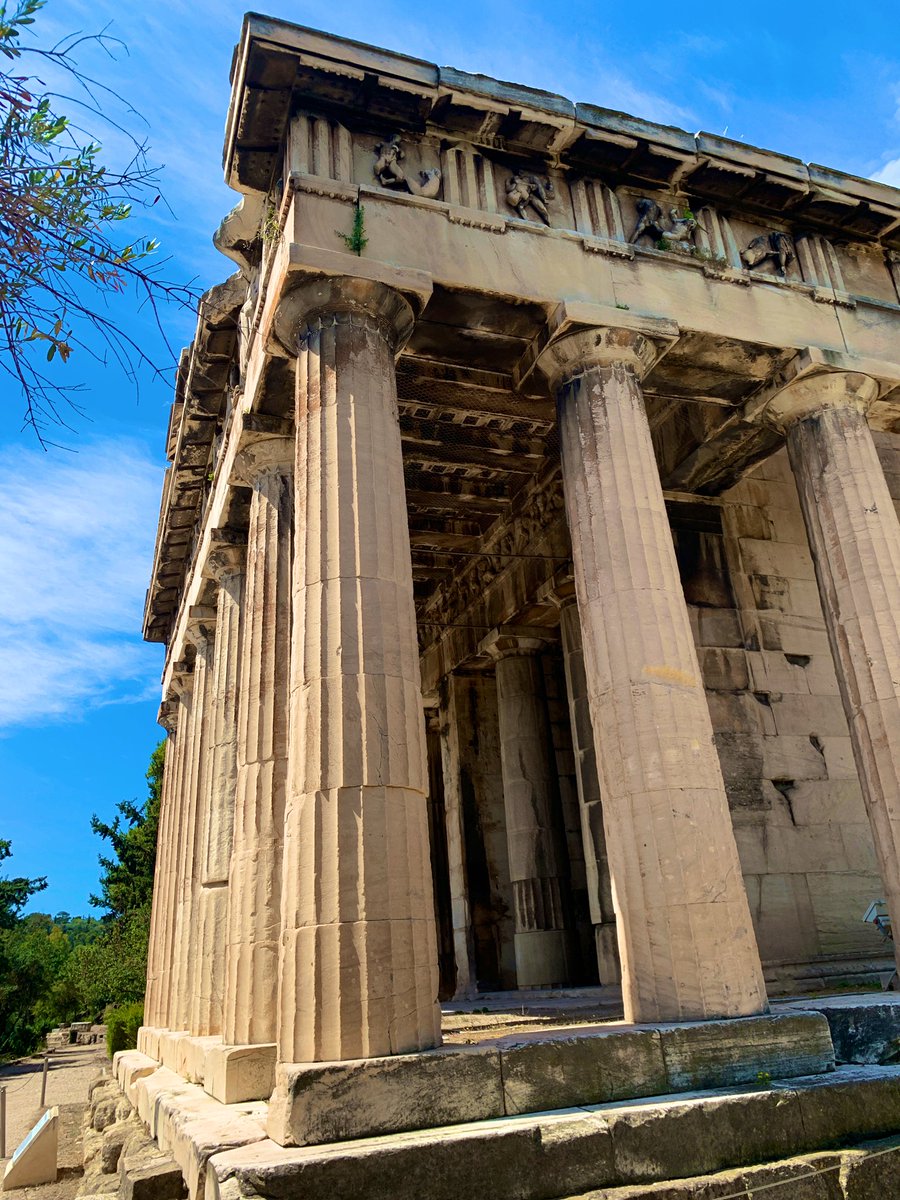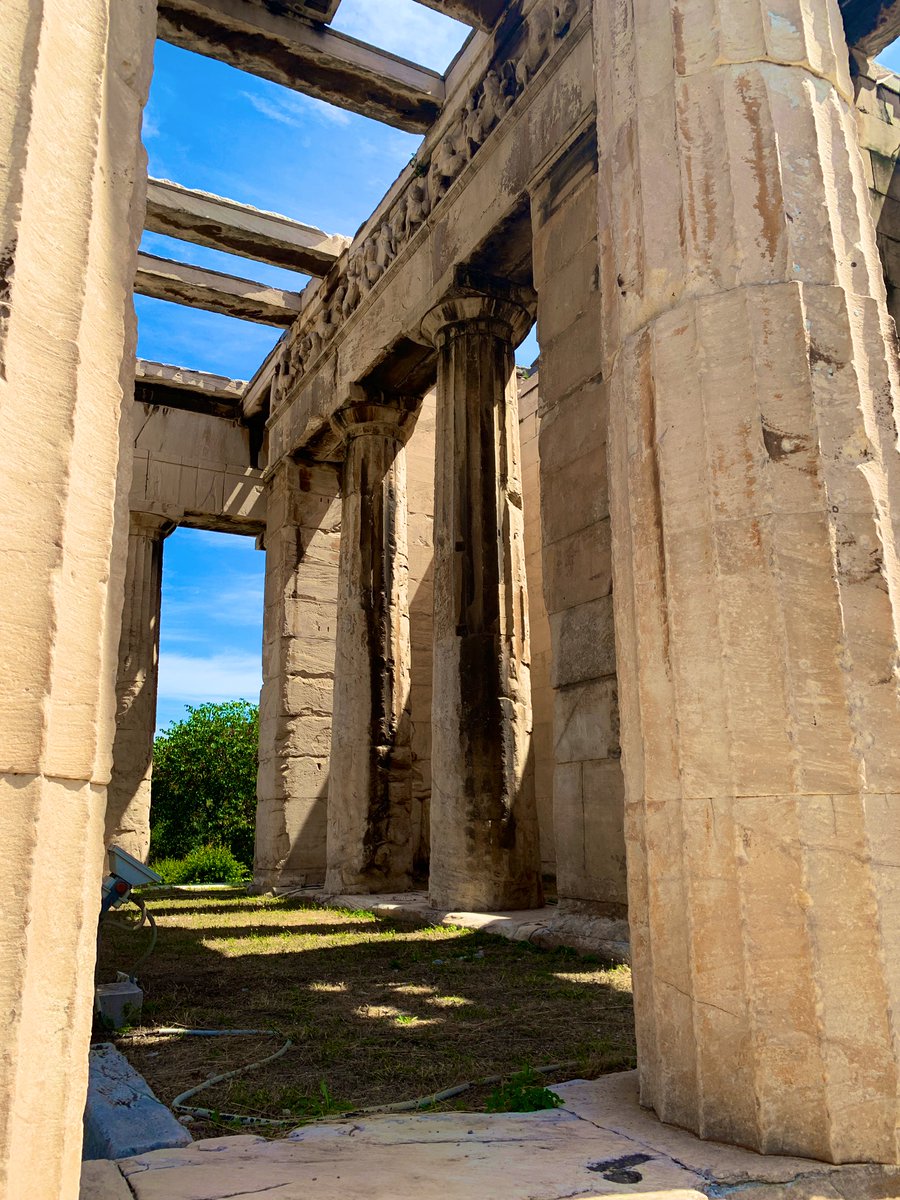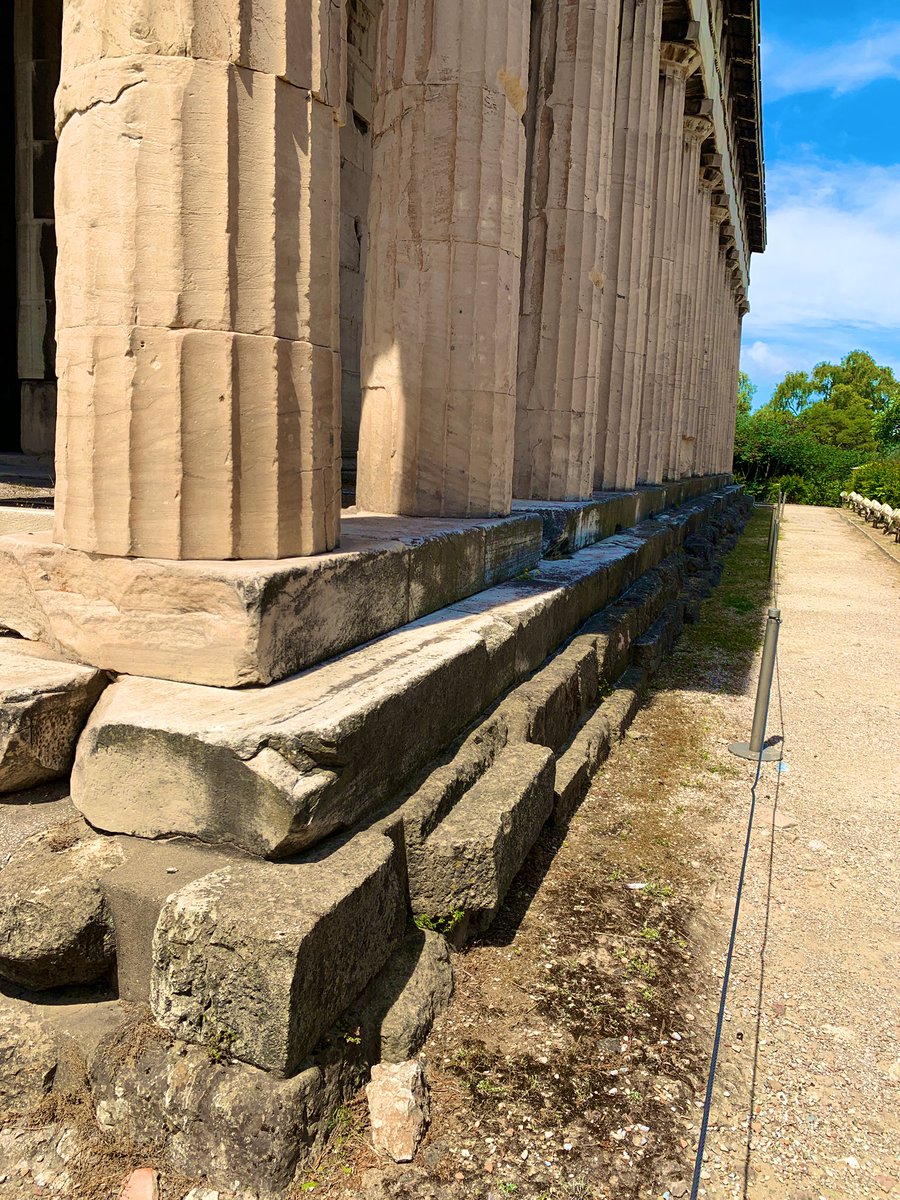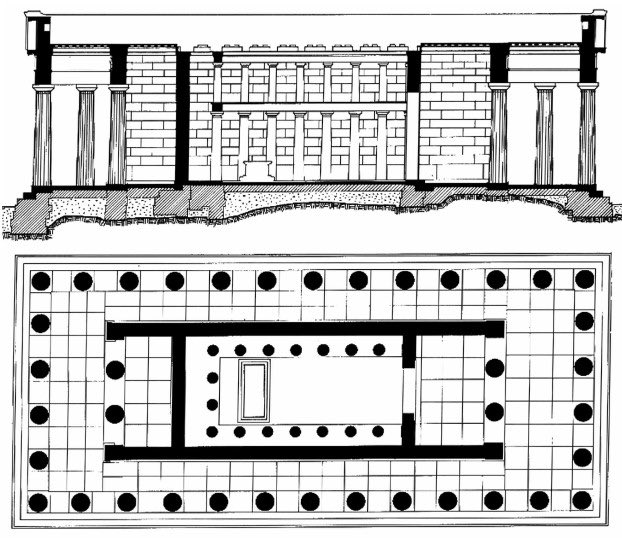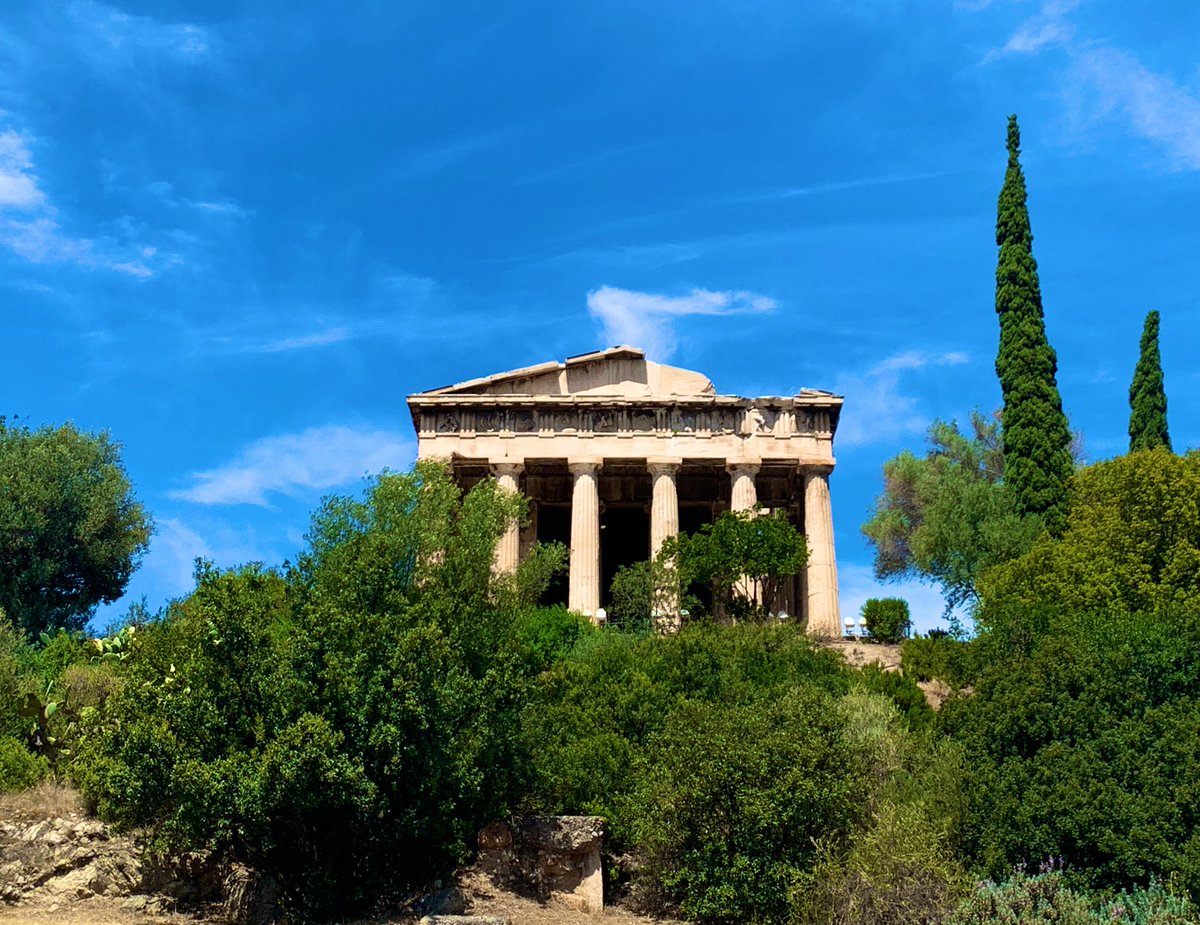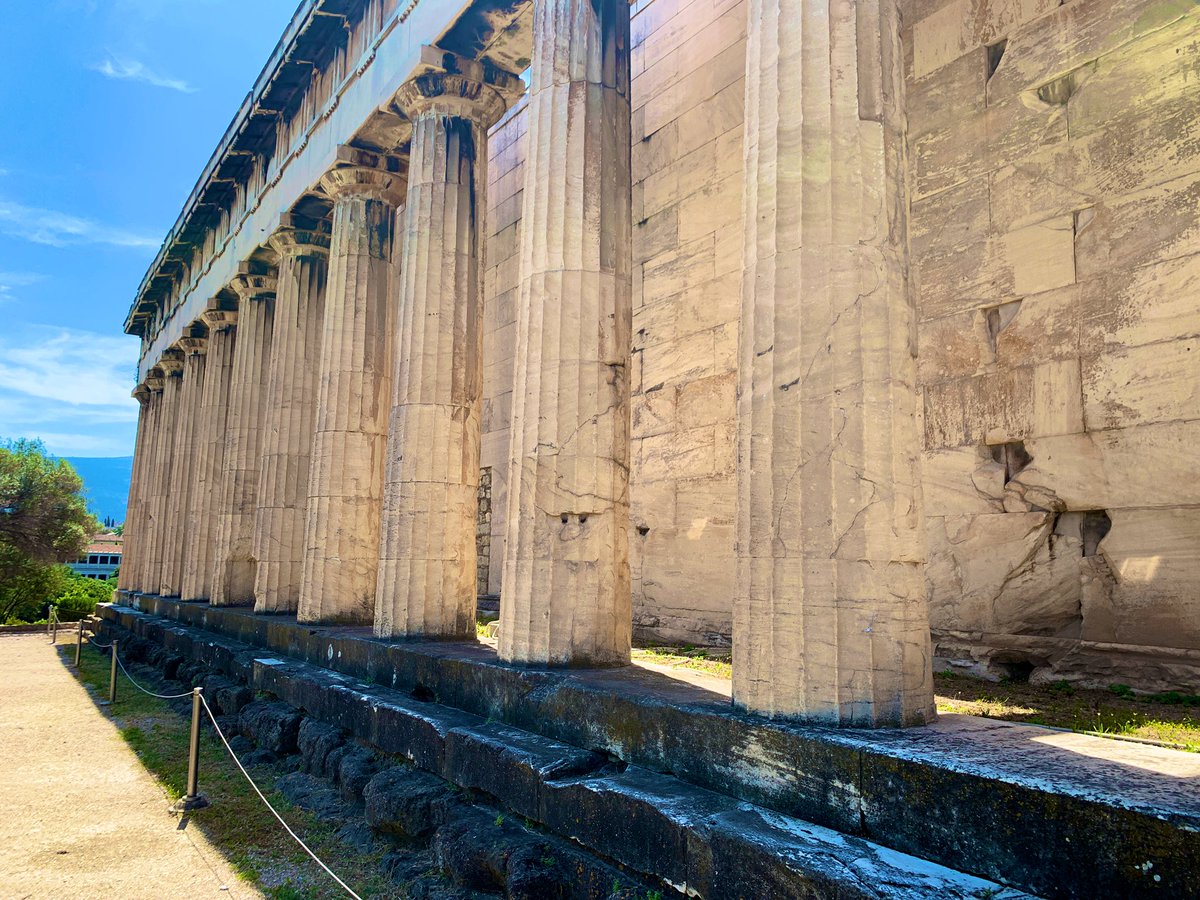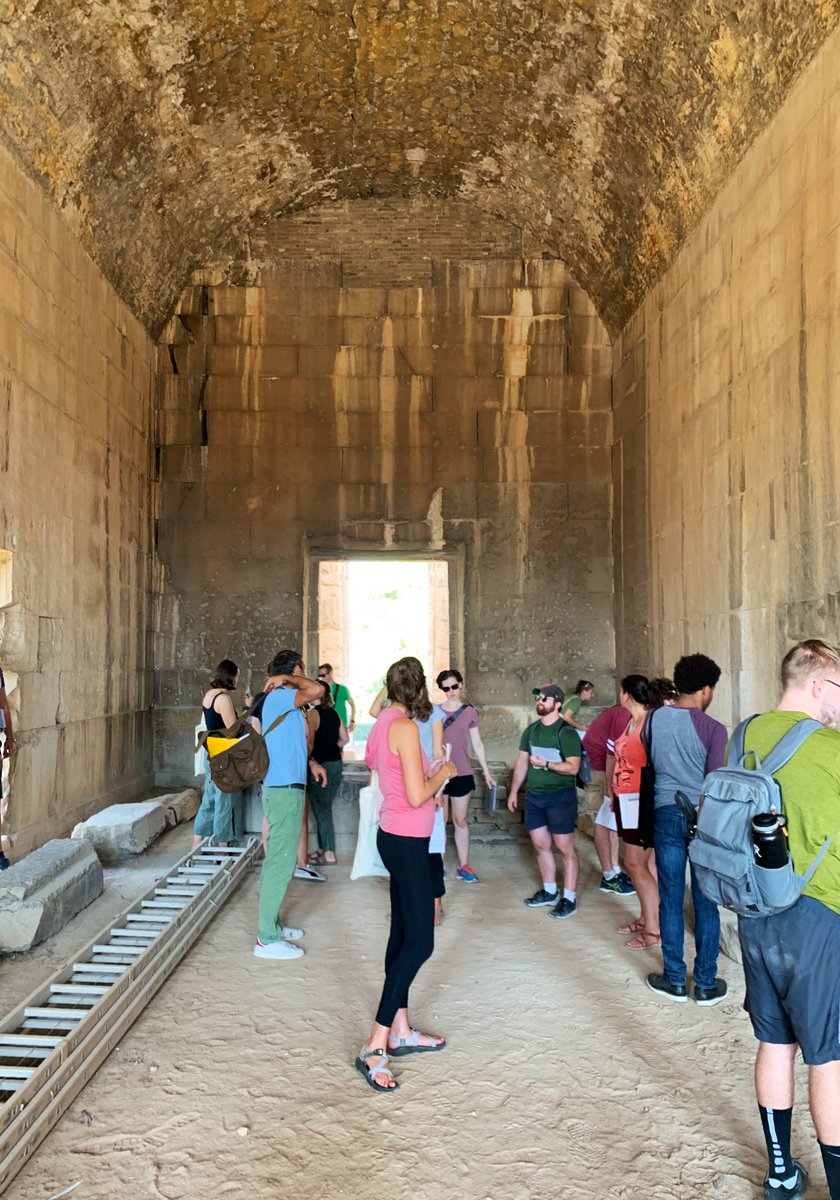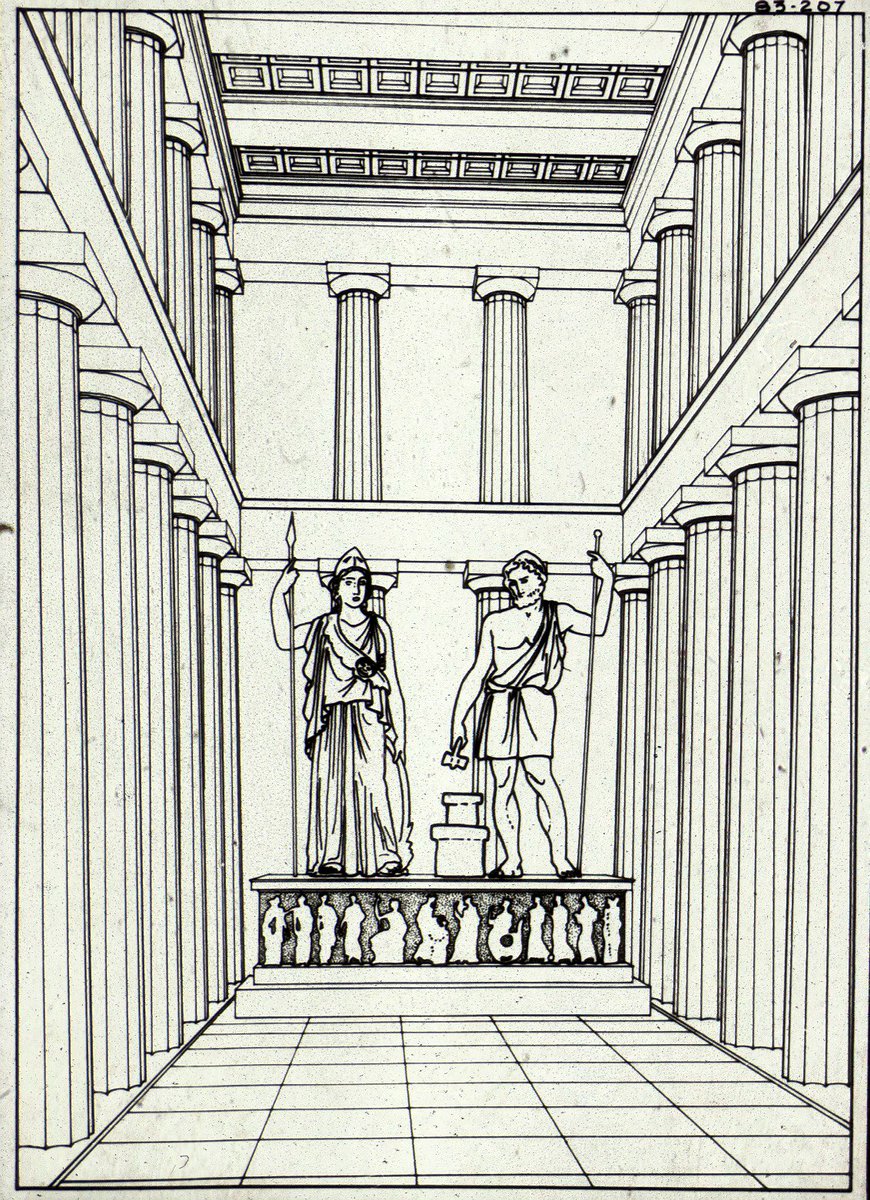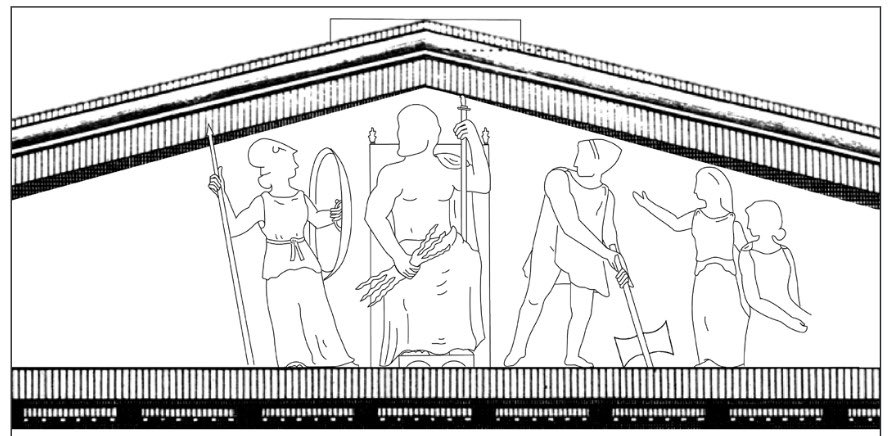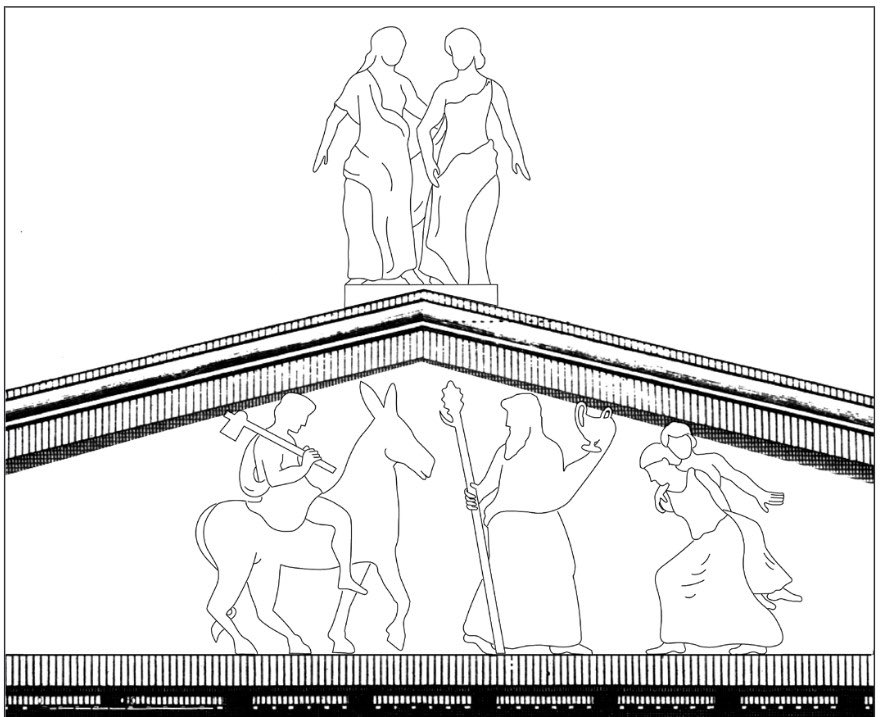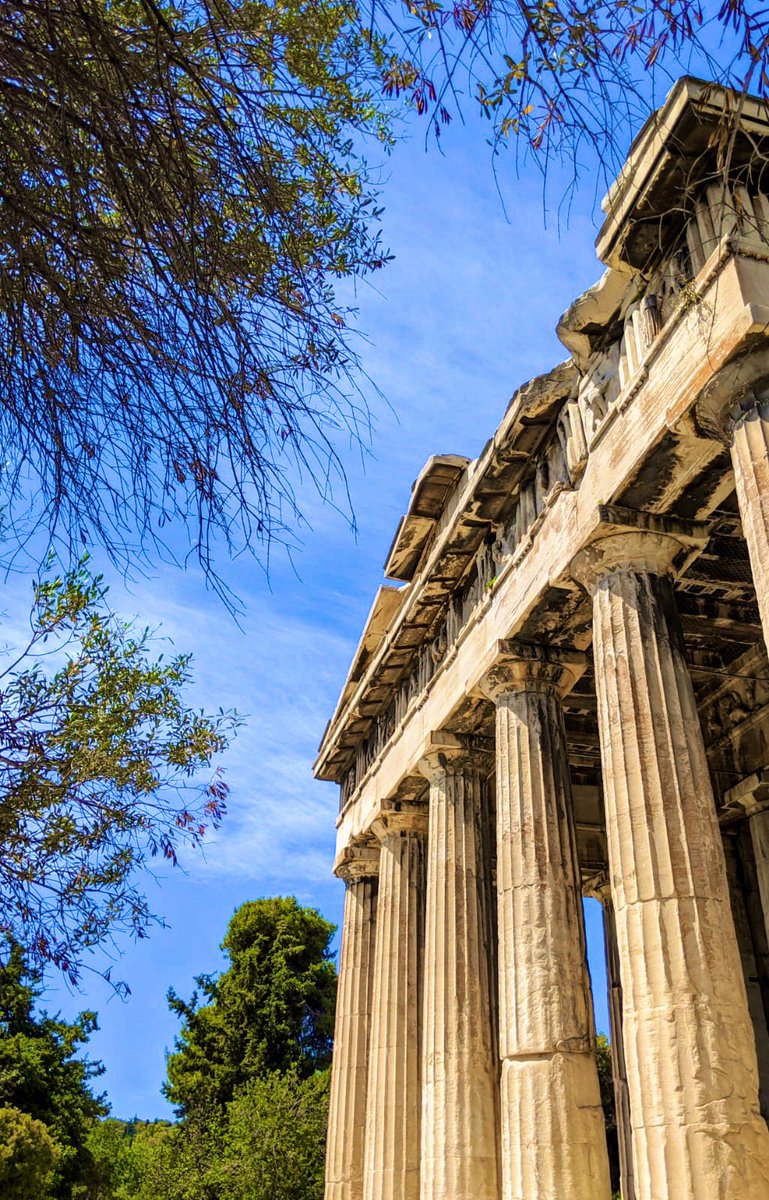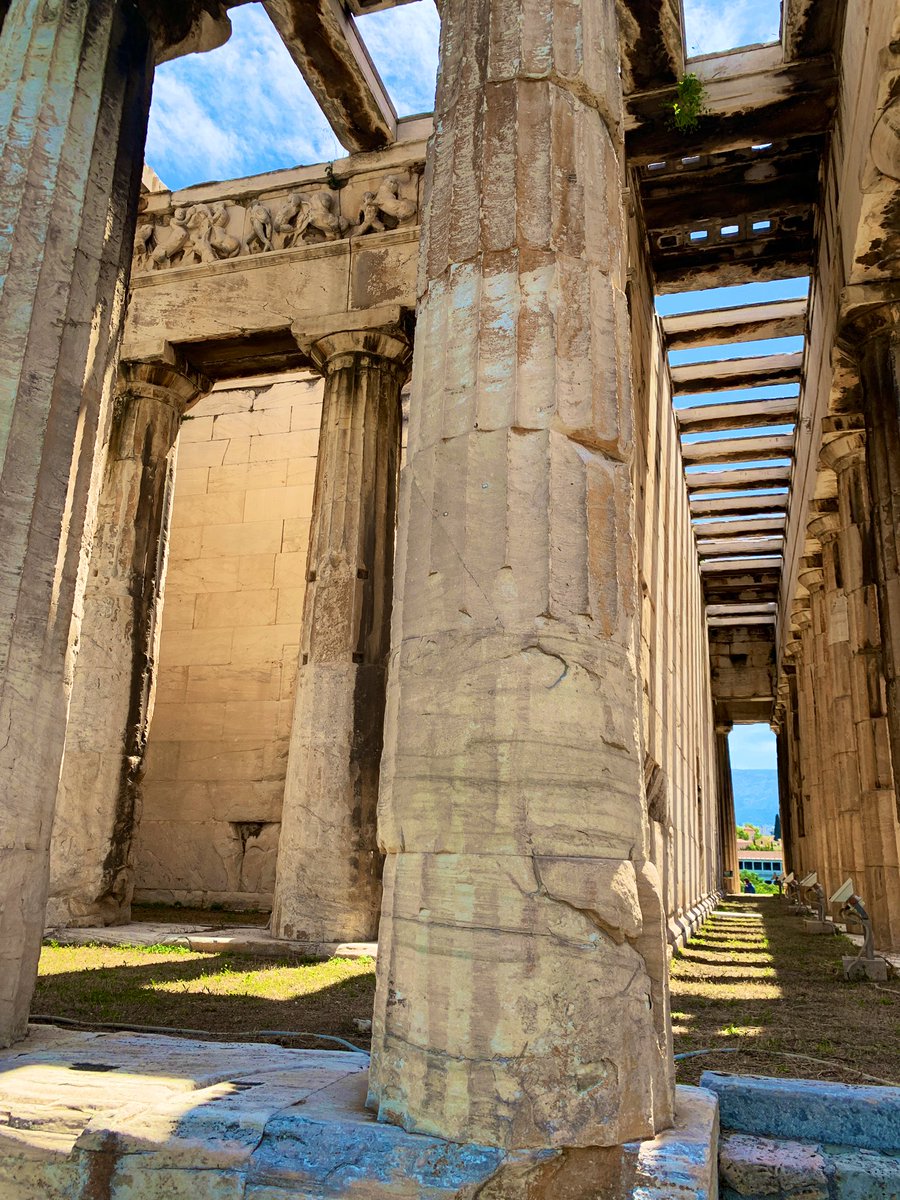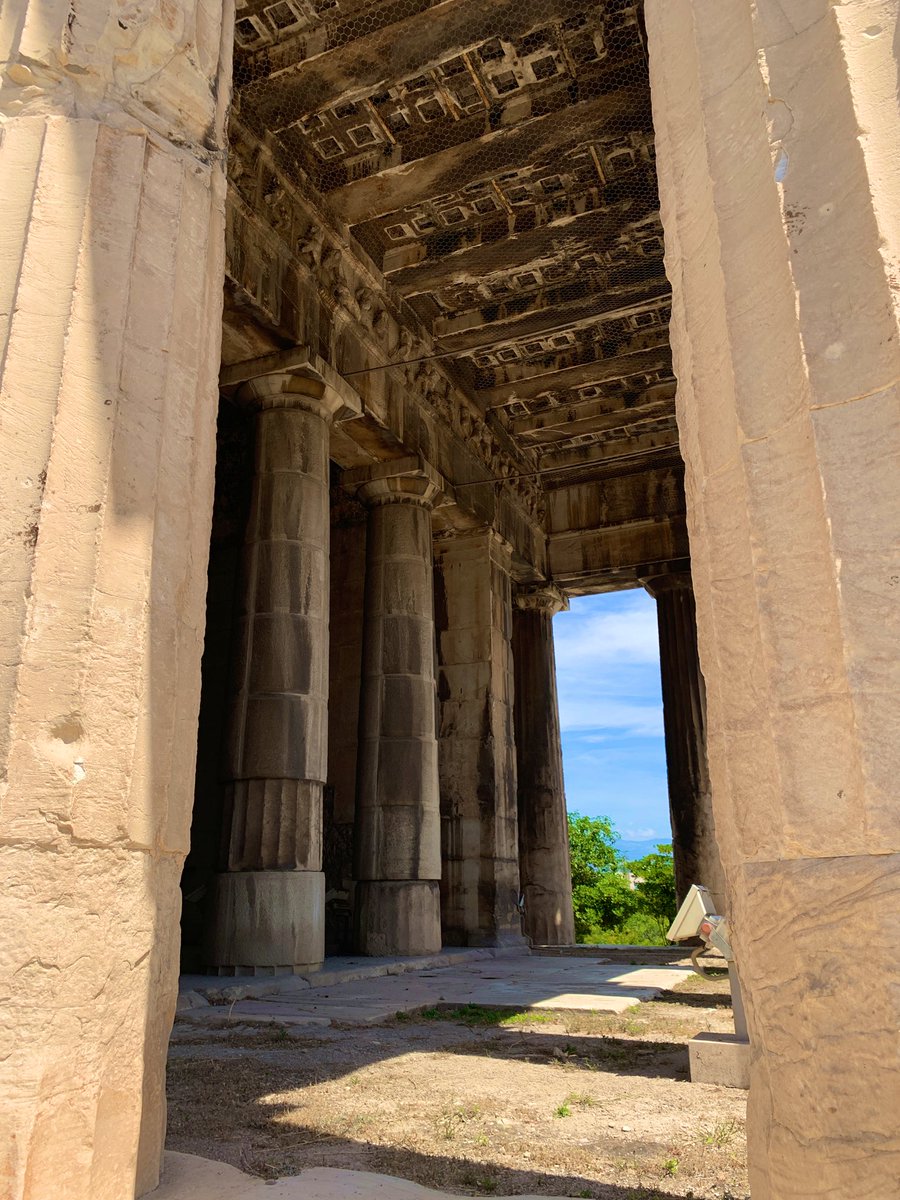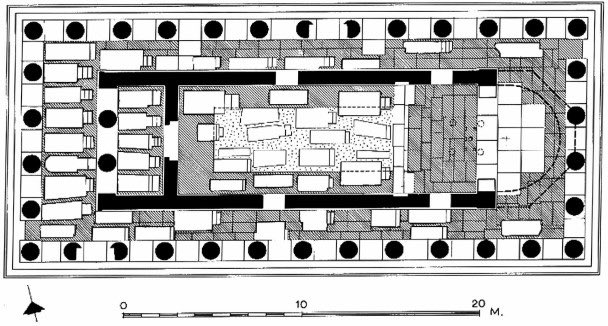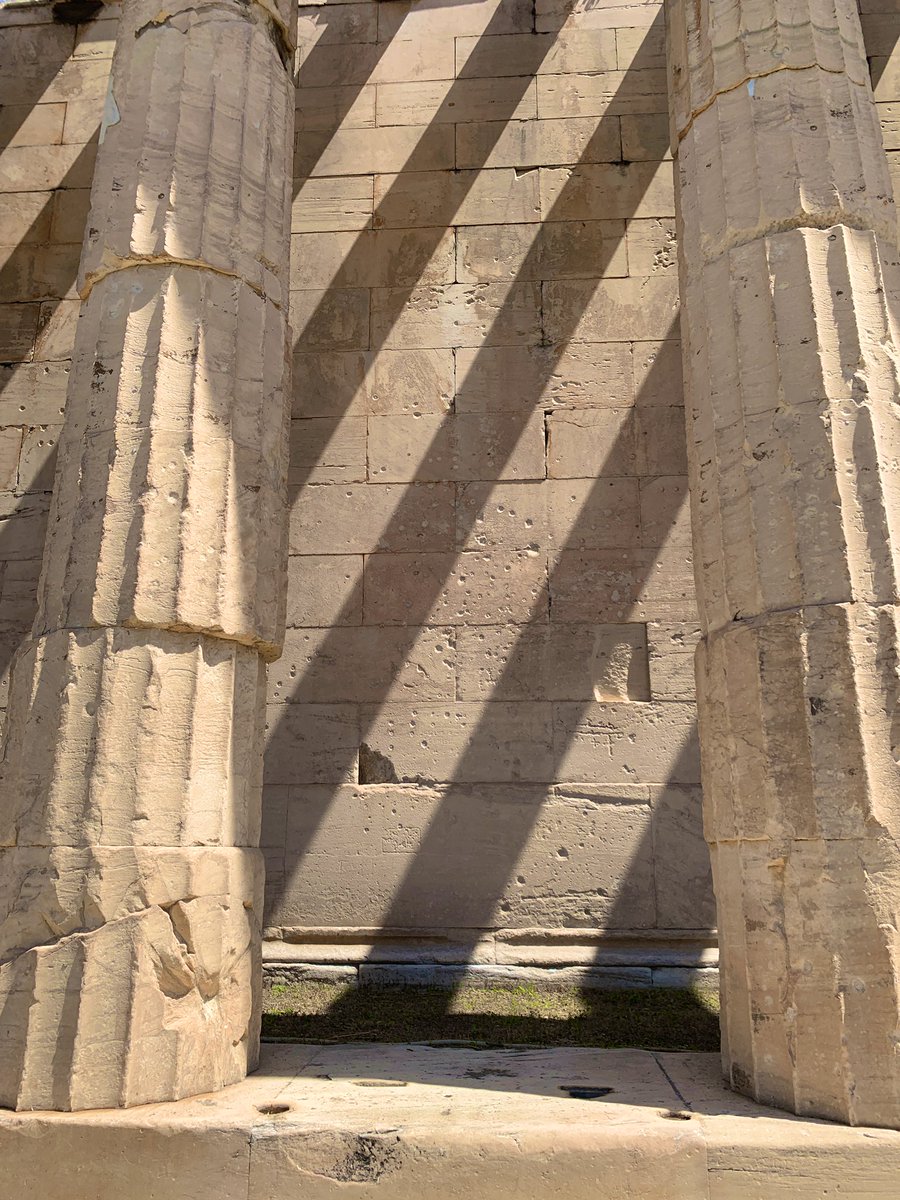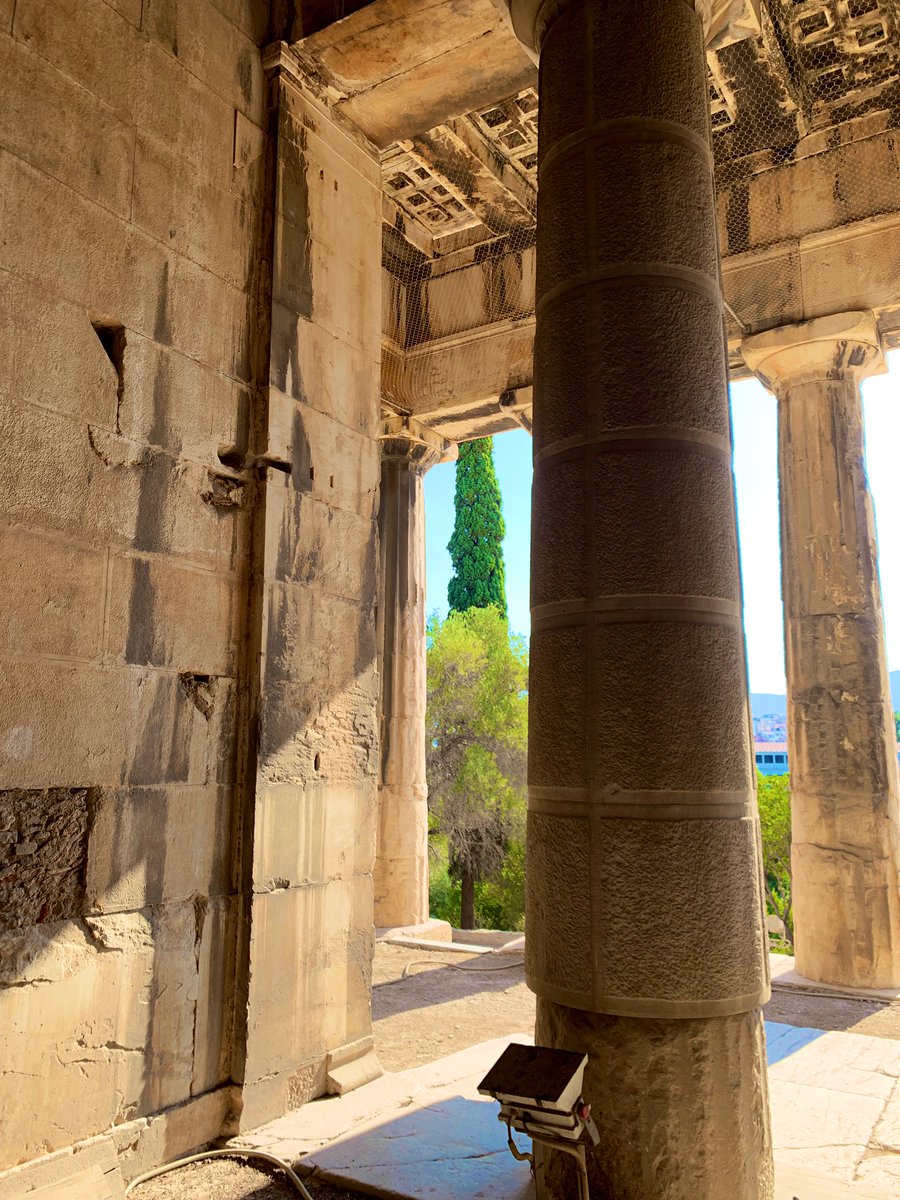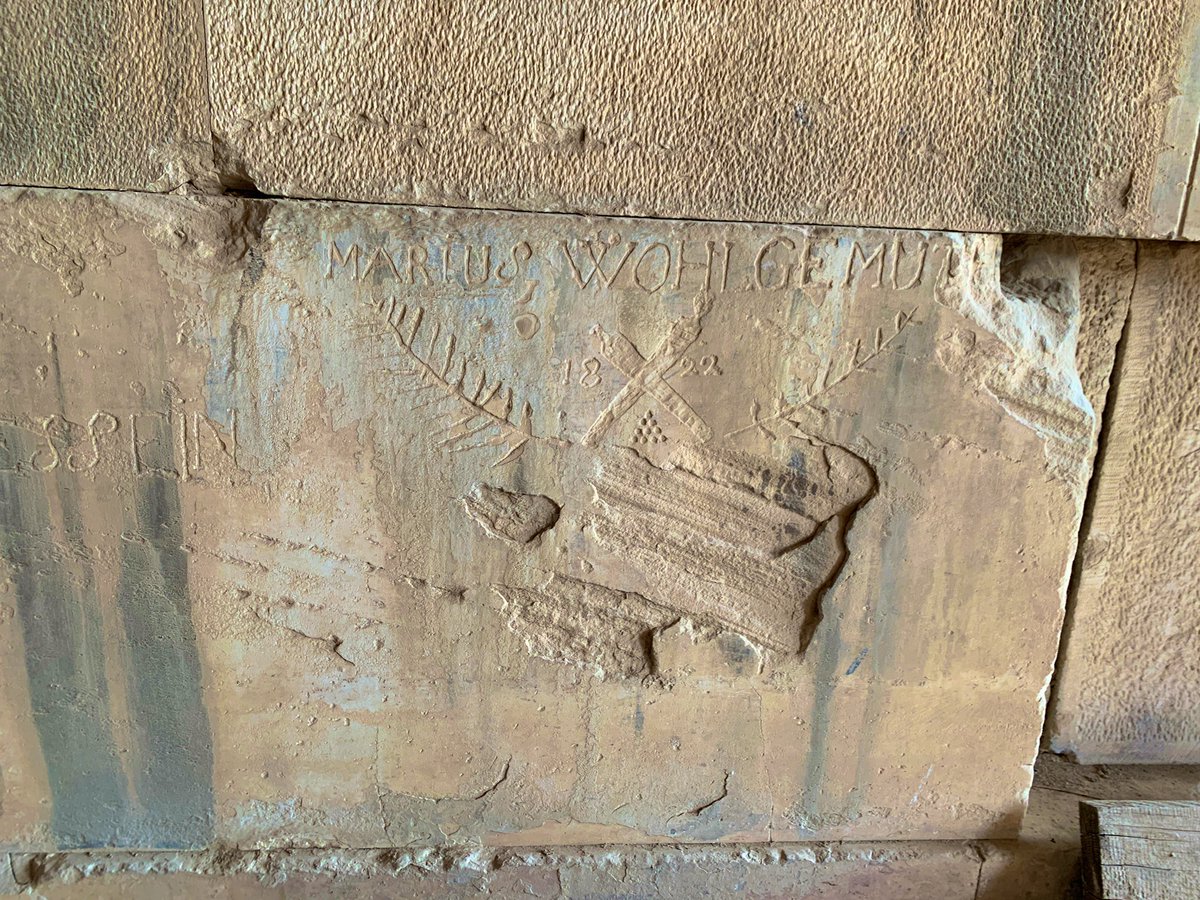They say the best preserved Greek temples are in Italy, but the Hephaisteion in #Athens can hang with any of them! It’s in amazing shape & visited by millions, & we’re still revealing its fascinating story today!
Let’s take a look inside!
.
#archaeology #MuseumsUnlocked #greece
Let’s take a look inside!
.
#archaeology #MuseumsUnlocked #greece
The temple sits atop the Kolonos hill at the east end of the Agora & was linked woth industrial activity on this end of the city.
The site is so lush today that the Hephaisteion is tough to photograph in full, luckily you can always count on the@ASCSAthens photo archives!
The site is so lush today that the Hephaisteion is tough to photograph in full, luckily you can always count on the@ASCSAthens photo archives!
Long thought to date to the 440s, like other major Athenian monuments, new evidence points to a much longer history of construction!
Foundation deposits date the beginning of construction to the 480s, the metopes date to the 450s, the frieze to 430, & the pediments in the 420s! – bei Ναός Ηφαίστου (Temple of Hephaistos)
Foundation deposits date the beginning of construction to the 480s, the metopes date to the 450s, the frieze to 430, & the pediments in the 420s! – bei Ναός Ηφαίστου (Temple of Hephaistos)
Whatever the reasons for its 60+ year construction—& we can’t just blame the Persian War & the Parthenon!—we’re left with an amazing monument that blends the Late Archaic with the Classical in terms of its architecture, decoration, and sculpture! – bei Ναός Ηφαίστου (Temple of Hephaistos)
In terms of its plan, the Hephaisteion is a ‘canonical’ Doric temple, 6x13 columns and measuring some 31x14m. Pausanias writes that the temple housed bronze statues of Athena & Haphaestus. The interior is barely recognizable, but Travlos offers this (imaginative?) reconstruction! – bei Ναός Ηφαίστου (Temple of Hephaistos)
The pedimental sculpture is very fragmentary, but Stewart & his colleagues are putting the puzzle back together! @LevintheMed has produced these wonderful reconstructions of both pediments:
East: birth of Athena
West: return of Hephaestus to Olympus
East: birth of Athena
West: return of Hephaestus to Olympus
Unlike the pediments, the metopes and frieze are almost perfectly preserved! The west frieze shows a centauromachy and the east portrays a mystery battle that has caused much debate! Only the 18 easternmost metopes were sculpted, depicting Herakles and Theseus! – bei Ναός Ηφαίστου (Temple of Hephaistos)
To understand why these sculptures were preserved, we have to explore the monument’s later history!
In the 5th c., it was reconsecrated as a temple to St. George. It was renovated and its orientation flipped. Sturm argues the sculpture was reinterpreted through a Christian lens!
In the 5th c., it was reconsecrated as a temple to St. George. It was renovated and its orientation flipped. Sturm argues the sculpture was reinterpreted through a Christian lens!
These bullet holes, found across the south side of the Hephaisteion, allude to the numerous conflicts in Athens after the temple became a church. During the Greek revolution, it was the traditional burial place for European Philhellenes & other prominent non-Orthodox Europeans
Today, the apse has been deconstructed and the graves moved to bring the monument back to its 5th century roots. The interior preserves the later vaulting of the Hephaisteion’s amazing afterlife, and the walls are covered in graffiti that span its long history! – bei Ναός Ηφαίστου (Temple of Hephaistos)
This isn’t the end of the Hephaisteion’s story, and a good deal of new scholarship is slated for publication soon! In the meantime, take a trip to the Agora whenever you get the chance, it’s one of my favorite places to work, walk, and think! https://twitter.com/levinerx/status/1268868705871704070?s=21">https://twitter.com/levinerx/... https://twitter.com/LevineRx/status/1268868705871704070">https://twitter.com/LevineRx/...

 Read on Twitter
Read on Twitter